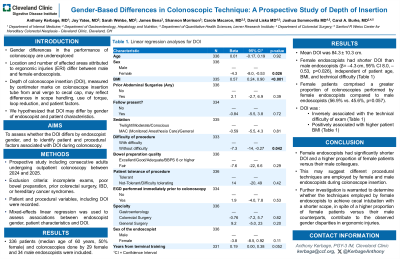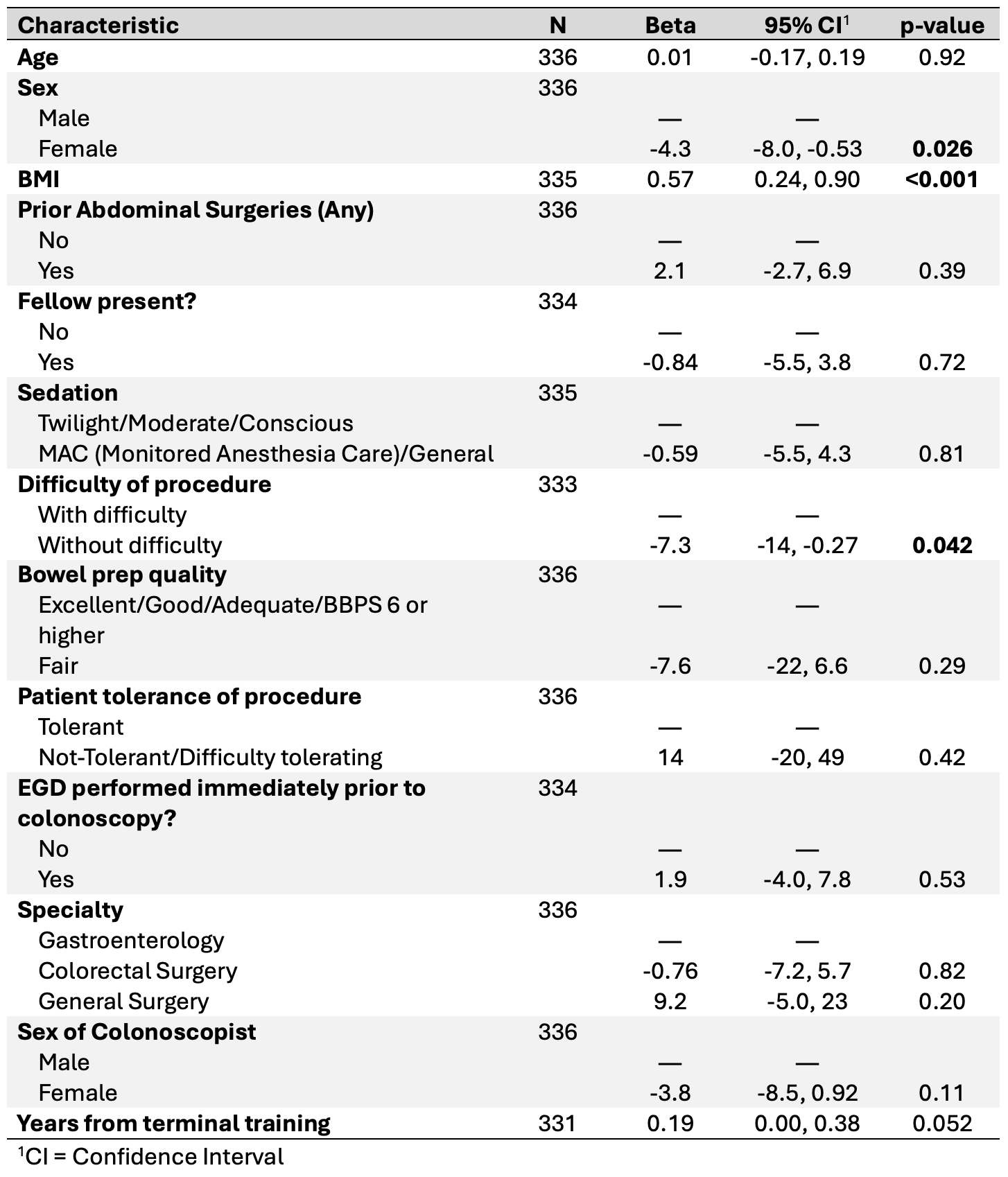Sunday Poster Session
Category: Colon
P0257 - Gender-Based Differences in Colonoscopic Technique: A Prospective Study of Depth of Insertion


Anthony Kerbage, MD
Cleveland Clinic Foundation
Cleveland, OH
Presenting Author(s)
1Cleveland Clinic Foundation, Cleveland, OH; 2Cleveland Clinic, Cleveland, OH
Introduction:
Gender differences in the performance of colonoscopy are underexplored yet the location and number of affected areas attributed to ergonomic injuries differ between male and female endoscopists. Depth of colonoscope insertion (DOI), measured by centimeter marks on colonoscope insertion tube from anal verge to cecal cap, may reflect differences in scope handling, use of torque, loop reduction, and patient-related factors. We hypothesized that DOI may differ by gender of endoscopist and patient characteristics.
Methods:
This prospective study included consecutive adults undergoing outpatient colonoscopy between 2024 and 2025 at our center. Exclusions included incomplete exams, poor bowel preparation, prior colorectal surgery, inflammatory bowel disease, or hereditary cancer syndromes. Patient and procedural variables, including DOI were recorded. Mixed-effects linear regression was used to assess associations between endoscopist gender, patient characteristics and DOI.
Results:
336 patients at a median age of 60 years (50% female) and colonoscopies done by 29 female and 34 male endoscopists were included. Mean DOI was 84.3 ± 10.3 cm. Female endoscopists had shorter DOI than male endoscopists (β= –4.3 cm, 95% CI 8.0, –0.53, p=0.026), independent of patient age, BMI, and technical difficulty (Table 1). Female patients comprised a greater proportion of colonoscopies performed by female endoscopists compared to male endoscopists (56.9% vs. 45.6%, p=0.057). DOI was inversely associated with the reported technical difficulty of exam (β= –7.3cm, p=0.042) and positively associated with higher patient BMI (β=0.57 per kg/m², p< 0.001).
Discussion: Female endoscopists had significantly shorter DOI and a higher proportion of female patients versus their male colleagues. These findings may suggest different procedural techniques are employed by female and male endoscopists during colonoscope insertion. Further investigation is warranted to determine whether the techniques employed by female endoscopists to achieve cecal intubation with a shorter scope, in spite of a higher proportion of female patients versus their male counterparts, contribute to the observed gender disparities in ergonomic injuries.

Disclosures:
Anthony Kerbage, MD1, Joy Yates, MD2, Sarah Wehbe, MD2, Qijun Yang, MS2, Jessica Crimaldi, NP2, Carol A.. Burke, MD, MACG2. P0257 - Gender-Based Differences in Colonoscopic Technique: A Prospective Study of Depth of Insertion, ACG 2025 Annual Scientific Meeting Abstracts. Phoenix, AZ: American College of Gastroenterology.
